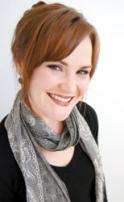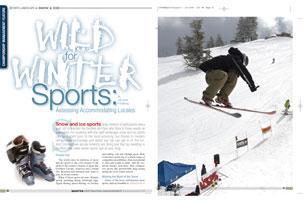
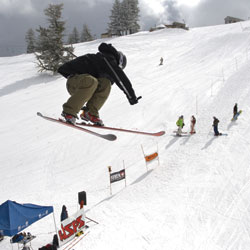 Snow and ice sports draw millions of participants every year, not to mention the families and fans who flock to these events as spectators. For locations with the right landscape, snow and ice sports can be a giant boon to the local economy, but thanks to modern refrigeration technology, just about any city can get in on the fun. And communities across America are doing just that by investing in facilities that make winter sports last all year long.
Snow and ice sports draw millions of participants every year, not to mention the families and fans who flock to these events as spectators. For locations with the right landscape, snow and ice sports can be a giant boon to the local economy, but thanks to modern refrigeration technology, just about any city can get in on the fun. And communities across America are doing just that by investing in facilities that make winter sports last all year long.
Frozen Fun
The world owes its plethora of snow and ice sports to the cold corners of the globe to the creative citizens of areas like northern Europe, America and Canada who invented and nurtured new ways to play on frozen terrain.
Many of those sports are now Olympic sports, including skiing, bobsleigh, luge,figure skating, speed skating, ice hockey, and curling. Like any Olympic sport, these events have given rise to a whole range of competitive possibilities, from recreational to elite and youth to adult. And the creativity doesn't stop there. New competitive sports like snowmobile drag racing spring up every winter season.
Making the Most of the Snow
Some of the most well-known snow sports, such as downhill, or alpine, skiing, are best pursued where rugged mountains can also be found. But that's not true for every snow sport. Communities with a healthy annual snowfall,or just seriously cold winters, can get in the winter sports game with events like ice fishing tournaments, cross country snowmobile racing, and cross country skiing.
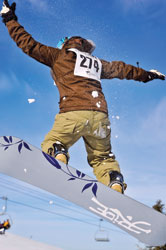 Snow sports are certainly a growth market. The National Ski Areas Association "Kottke National End of Season Survey" 2007-08 Preliminary Report reveals that ski and snowboarding facilities received more than 60 million visits in 2007-2008, up from 55.1 million in 2006-2007.
Snow sports are certainly a growth market. The National Ski Areas Association "Kottke National End of Season Survey" 2007-08 Preliminary Report reveals that ski and snowboarding facilities received more than 60 million visits in 2007-2008, up from 55.1 million in 2006-2007.
According to the report, the Rockies are America's favorite snow sport locale, with 21.3 million visits. The Northeast came in second with 14.1 million visits, 11.4 million in the third-place Pacific, 8.1 million in the Midwest and 5.2 in the Southeast.
Snowboarding, invented in the 1965, according to the United States Ski and Snowboard Association (USSSA), is one of the newest snow sports, but that doesn't limit its ability to draw a crowd. Thousands of spectators turn out to see some of the sport's most breathtaking feats during the Chevy U.S. Snowboard Grand Prix, a three-city tour of some of the world's best Olympic and X Games Champions. In 2008, the event made stops at three world class venues, including Breckenridge, Colorado.; Tamarack Resort in Idaho; and Killington Resort in Vermont.
While the world's best snowboarders wowed crowds at Tamarack Resort, just one hour away in Boise, Idaho, skiing is not the winter sport of choice. Like any town that doesn't sit atop its own mountain, Boise has had to take its winter sports market into its own hands.
"Downtown, we have the Qwest Arena, a 5,000-seat arena that hosts our semi-pro hockey team, the Idaho Steelheads," says Laurie McConnell, communications manager at the Boise Convention and Visitors Bureau. "We also have Idaho Ice World, with two indoor NHL regulation size rinks, where we host youth and adult amateur hockey tournaments, figure skating competitions, even some curling events."
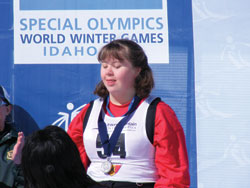 Thanks to Boise's infrastructure investment, as well as its proximity to some first-rate slopes, the city won the honor of hosting the 2009 Special Olympics Winter Games.
Thanks to Boise's infrastructure investment, as well as its proximity to some first-rate slopes, the city won the honor of hosting the 2009 Special Olympics Winter Games.
Medford, Southern Oregon's largest city, is another community that draws world-class events with exceptional facilities. Medford is home to The RRRink, a 37,500 square-foot venue that will host the US Figure Skating 2010 Qualifying Regional Championships in October 2009.
"When people come to our area for a sporting event, we have great facilities but also other attractions," says Sue Stephens, convention sales director for the Medford Convention and Visitors Bureau.
Most famous for its distinctive wines and winery tours, Medford's action doesn't stop when the harvest season ends. In addition to summer sporting events, such as water sports and fishing, the Medford's Rogue River-Siskiyou National Forest also offers hundreds of miles of trails for cross-country skiing, snowmobiling, and downhill skiing.
Some areas combine prime slopes with extraordinary ice facilities to create the ultimate winter sport mecca. One of America's ultimate snow and ice sports capitals is in Lake Placid, New York at the Olympic Regional Development Authority (ORDA).
Created by the State of New York to manage the facilities used during the 1980 Olympic Winter Games at Lake Placid, the ORDA has become central to the world of snow and ice sports. This is where the U.S. Hockey team made their "Miracle" win over the Soviet Union and where Eric Heiden swept all the speed skating gold medals in the 1980 Olympics, and today those same facilities host world-class events in downhill, nordic, ski jumping, snowboard, bobsled, luge, speed and figure skating, hockey, and biathlon, with over 500 national and international championships since 1980.
Fanatic for Figure Skating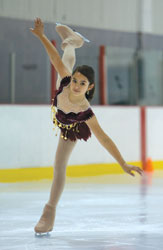 Skating may have been a European invention, but an American is credited with putting the final turn on the sport of figure skating. Just before the Civil War, Jackson Haines, a New Yorker, combined the current crazes of skating and dance to pioneer the sport of figure skating.
Skating may have been a European invention, but an American is credited with putting the final turn on the sport of figure skating. Just before the Civil War, Jackson Haines, a New Yorker, combined the current crazes of skating and dance to pioneer the sport of figure skating.
Today, US Figure Skating, the sport's National Governing Body (NGB), reports having 184,000 members representing more than 1,425 clubs and basic skills programs. The organization bids out more than 20 championship events each year, offering cities the opportunity to showcase their communities.
Communities that host a figure skating event are sure to see good results. That's because the sport's fans are almost as dedicated as the figure skaters themselves. According to research conducted by Turnkey Sports at the 2007 State Farm U.S. Figure Skating Championships in Spokane, 37 percent of spectators traveled more than 200 miles to attend the event and more than 60 percent of them brought along family members.
Bring the Puck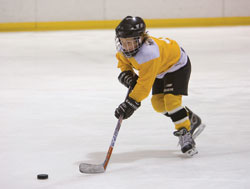 Originally popular in places with cold weather, modern ice rinks have propelled hockey's status in America. Now NHL teams in hot weather climates– like the Dallas Stars and San Jose Sharks - are holding their own against traditionally top-ranked cold weather teams, and the sport is growing in popularity among women as well. USA Hockey, the sport's NGB, reported a five percent increase in female hockey participation from 2006 to 2007.
Originally popular in places with cold weather, modern ice rinks have propelled hockey's status in America. Now NHL teams in hot weather climates– like the Dallas Stars and San Jose Sharks - are holding their own against traditionally top-ranked cold weather teams, and the sport is growing in popularity among women as well. USA Hockey, the sport's NGB, reported a five percent increase in female hockey participation from 2006 to 2007.
Women's ice hockey became an Olympic sport at the 1998 Winter Olympic Games in Nagano, where the American team beat out Canada for the gold medal. Today, America's first professional women's hockey team, the Minnesota Whitecaps, compete as members of Canada's Western Women's Hockey League.
While professional and collegiate hockey are certainly growing, youth and junior hockey tournaments and camps represent a major portion of American hockey events and can mean big business for the cities that they choose call home.
Kathy McGarrigle, an 18-year hockey veteran with seven USA Hockey Women's National Championship trips under her belt, puts her experience to use for the future of girls hockey. As head coach for the Lady Ducks 12U and 14U teams, McGarrigle, along with her fellow coaches, is making sure California's girls get an introduction to the world of hockey and build skills they need to succeed there.
"West of the Mississippi, there just aren't a lot of girls playing hockey, so when you develop a team like the Lady Ducks, the teams are so far away form each other that tournaments are very beneficial," explains McGarrigle.
The Lady Ducks' leadership solved that problem by hosting their own invitational tournaments, including the Lady Ducks Fall Classic. The USA Hockey sanctioned tournament, held every fall at the Lady Ducks' home rink, Anaheim Ice,brings together more than 350 players —and their families- for three days of hockey play.
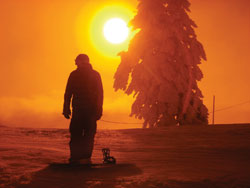 But the rules of hockey tournaments mean organizers have more to consider than just time on the ice.
But the rules of hockey tournaments mean organizers have more to consider than just time on the ice.
"There are rules as to how much hockey kids can play in a certain time," says Paul Omodt, 25-year hockey coach and past president of the St. Louis Park Hockey Association, located in one of America's hockey hotbeds, Minnesota. According to Omodt, creating a successful hockey tournament has a lot to do with venue. "The kids usually have to have four hours between games, so it's important that the facility you choose has enough ice sheets, preferably two or three sheets together, to schedule the games, but also to create excitement. More space means you can bring in more vendors and more teams. It builds a true tournament feel."
Finding the right location isn't the only important step to starting a successful hockey tournament. Given the myriad of details that have to be arranged, like establishing the tournament's rules, obtaining sanctioning from USA Hockey and matching up teams by skill level, one of the best ways to get started is to learn from someone else.
"Even if you've visited a tournament, it's not enough. It would be ideal to get permission to shadow someone who is doing their own tournament," says McGarrigle.
And doing it well is the most critical issue because in hockey, there's heavy competition on and off the ice. With tournaments every nearly holiday weekend throughout the year, and many other weekends as well, standing out is crucial.
"The goal is to have a tournament where the teams come back because the competition and the atmosphere are good," says Omodt. "If you're a newer tournament, find weekends that don't conflict with big, older tournaments. You can have a great tournament the same weekend as an older one, too. Just make sure your tournament is a different competition level."
The Roaring Game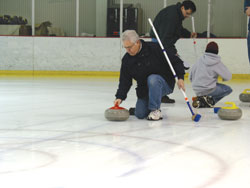 In the world of snow and ice sports, one ancient game is making a modern comeback: curling. Nicknamed "The Roaring Game" for the sounds curling stones makes on the ice, curling originated during northern Europe's mini Ice Age in the 1500s when farmers with frozen fields needed something to do to pass the time.
In the world of snow and ice sports, one ancient game is making a modern comeback: curling. Nicknamed "The Roaring Game" for the sounds curling stones makes on the ice, curling originated during northern Europe's mini Ice Age in the 1500s when farmers with frozen fields needed something to do to pass the time.
Already popular in its home country Scotland, curling captured the world's attention at the 2006 Olympic Games in Turin, Italy. Sports Illustrated writer Mark Bacthel called it "a forward-thinker's game" and likened curling's strategic pace to chess or baseball.
Today, the United States Curling Association counts 145 curling clubs as members, clubs that work to help local ice rinks bring the unique and increasingly popular sport to their area.
"Curling ice is different than hockey or figure skating ice, but it's not hard to make," says Terry Kolesar, director of communications for the United States Curling Association. "Rinks can contact us, and we'll put them in contact with someone local who can teach them how to make curling ice."
A set of curling stones, costing around $7,000, will be the biggest investment to attracting a curling event, but, given the growing popularity of this distinctive Olympic sport, it might just be worth it. The United States Curling Association recently accepted a bid from Denver to host the 2010 Olympic Trials for curling at the 7,000 seat Broomfield Event Center. With multiple curling events taking place nationwide every month, curling is a sport that's sure to sound its roar in every community sometime soon.
Get in the Game
A community with mountains, or even just a lot of snow, is a winter sports natural, but take it from hundreds of cities across America: winter sports aren't just for wintry locations anymore. The right sheet —or sheets— of ice can mean year-round events for any community with a penchant for winter play. Get in touch with the hockey, figure skating and curling clubs in your area, and get your community in the winter sports game.
--------------------------------------------------------------------------------
Snowsports Industries America. "SIA Snowsports Fact Sheet." Accessed Sept. 17, 2008. http://www.snowsports.org/media_center/sia_snow_sports_fact_sheet.

